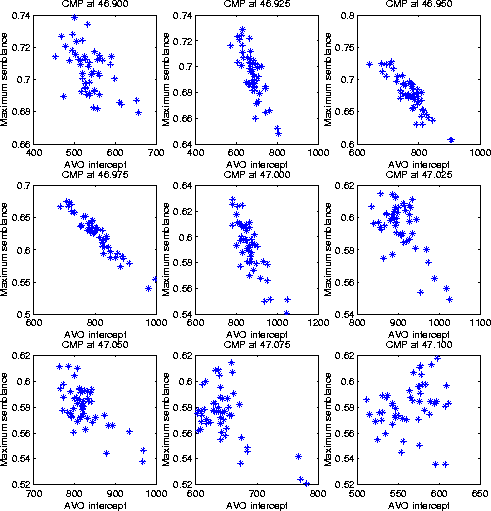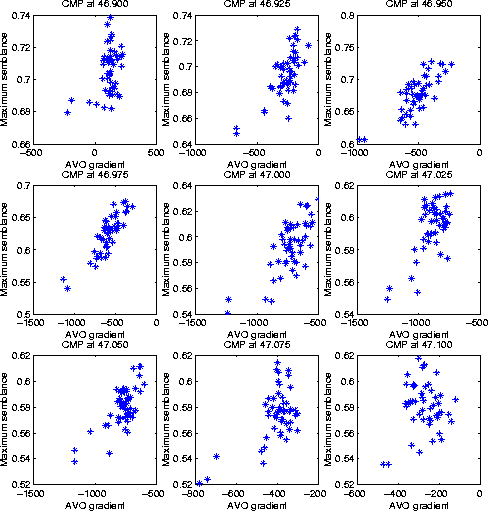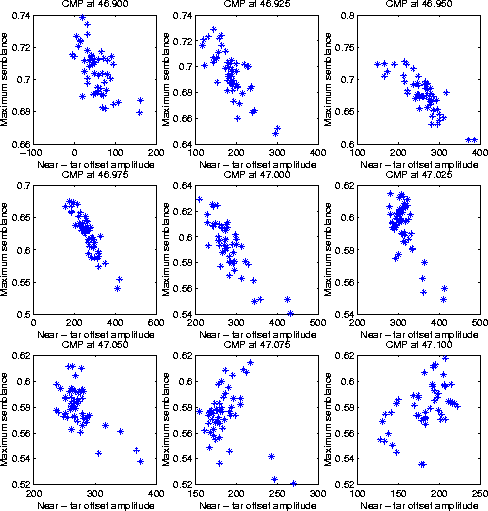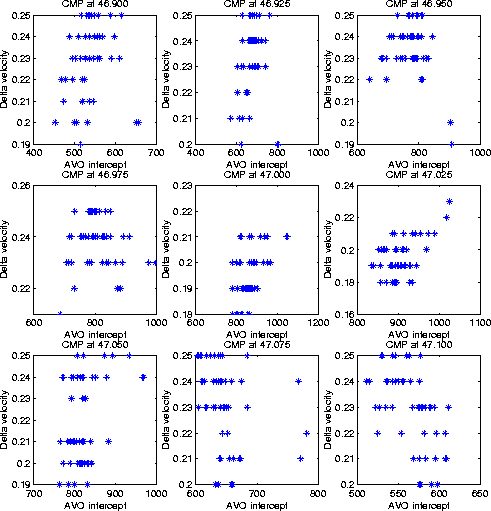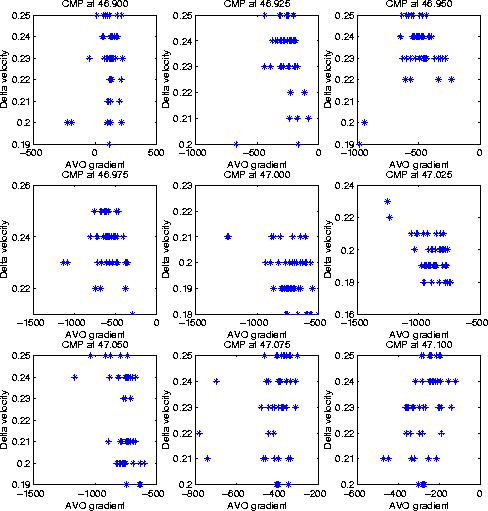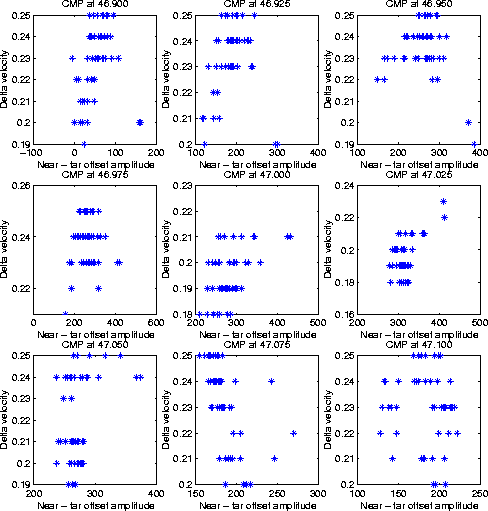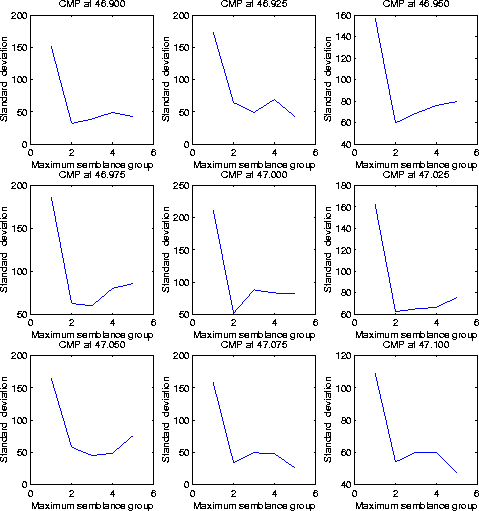




Next: Conclusion
Up: Mora & Biondi: Seismic
Previous: Procedural steps
According to Koefoed's conclusion mentioned by Shuey (1985),
when the underlying medium has a greater longitudinal velocity and
a greater Poisson's ratio, the reflection coefficient tends to increase
with increasing angles of incidence.
We could expect this AVO behavior at the flat reflector,
assuming the hypothesis Ecker (1998)
that this reflector marks the transition
from gas-saturated to brine-saturated sediments,
and because gas-saturated sediments exhibit abnormally
low Poisson ratios Ostrander (1984).
However, in Figure 9 we can see that the general tendency
has the opposite behavior-decreasing amplitude values with increasing
offset ray parameter-even though in the near offset
the reflection coefficient tends to increase with increasing offset ray
parameter, as expected.
There are several possible explanations for this discrepancy. Perhaps
the original hypothesis-that the flat reflector marks the transition from
gas-saturated to brine-saturated sediments-doesn't hold.
On the other hand, the discrepancy may be the result of procedural
problems associated, for example, with the fact that the
attributes we considered are not strictly AVO attributes.
From the calculated coherence measures and attribute values at some CMPs
around distance 47 km, we generated the crossplot of attribute versus
coherence shown in Figures
10 through
15.
In general, it is difficult to establish definitive tendencies of attributes
and velocity coherence. However, for the case of maximum semblance
coherence measures, as is shown in Figures
10, 11, and 12,
attribute values are more dispersed for lower coherence
values, and more localized for higher coherence values.
We sorted the coherence values and generated five groups of data samples,
then calculated the variance and standard deviation for each group.
For the case of the maximum semblance, the results suggest that
attribute values tend to have higher variance and higher standard deviation
as coherence values decrease.
Figures 16, 17, and 18 show the standard
deviation results corresponding to
the maximum semblance plots in Figures 10, 11, and 12.
int-max
Figure 10 Intercept versus
maximum semblance for CMPs from 46.9 to 47.1 km




 grad-max
grad-max
Figure 11 Gradient versus
maximum semblance for CMPs from 46.9 to 47.1 km




 stack-max
stack-max
Figure 12 Near - far offset amplitude versus
maximum semblance for CMPs from 46.9 to 47.1 km




 int-delta
int-delta
Figure 13 Intercept versus
delta velocity for CMPs from 46.9 to 47.1 km




 grad-delta
grad-delta
Figure 14 Gradient versus
delta velocity for CMPs from 46.9 to 47.1 km




 stack-delta
stack-delta
Figure 15 Near - far offset amplitude versus
delta velocity for CMPs from 46.9 to 47.1 km




 std
std
Figure 16 Maximum semblance group versus
standard deviation corresponding to plots in Figure 10




 std2
std2
Figure 17 Maximum semblance group versus
standard deviation corresponding to plots in Figure 11




 std3
std3
Figure 18 Maximum semblance group versus
standard deviation corresponding to plots in Figure 12










Next: Conclusion
Up: Mora & Biondi: Seismic
Previous: Procedural steps
Stanford Exploration Project
10/25/1999
